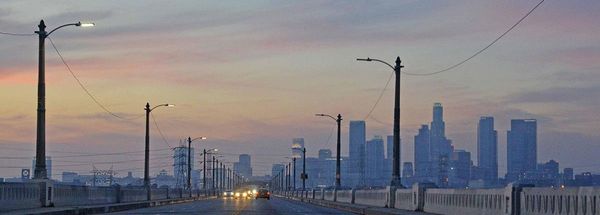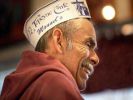Eye For Film >> Movies >> East L.A. Interchange (2015) Film Review
East L.A. Interchange
Reviewed by: Jennie Kermode

Ever since 1908, when Israel Zangwill's play The Melting Pot popularised that term, the US has imagined itself as a place where immigrants from diverse backgrounds could come together and fuse into a bold new American culture. In a society fraught with racial divisions, it's difficult to argue that this vision has come to pass, but in some places, in some times, a multicultural approach has flourished. Boyle Heights, by the East L.A. Interchange, is one such place. These days it's widely disparaged and seen as a slum, but it's place full of secret history, and this documentary sets out to explore it.
Decisions about immigration inevitably get made by the rich, but it's the poor who live with the consequences, who make them work or condemn them to failure. California is a place which people from all over the world dream of moving to, so it's no surprise that a large proportion of the people who migrated to the US during the early part of the 20th century ended up living there. They found their way into low cost housing and most took manual jobs - the practical option for people with limited English - or started their own businesses. This resulted in the development of communities that big business had no interest in serving, so for a while they existed in a strange kind of parallel America, one perhaps more closely aligned with the ideas of the Founding Fathers, where they were in charge of their own destinies. With homes packed close together, children running in the streets and everybody using the same local shops, it made no sense to worry about race or ethnicity. At least, not until the day that the police started rounding up the ethnically Japanese and taking them away to internment camps.

The monstrousness of this and the extension of its devastating impact to people who suddenly saw their neighbours and schoolfriends snatched away is all the more stark in this context, with every recent immigrant and descendent thereof suddenly aware that their citizenship meant nothing compared to their accent or the colour of their skin. Betsy Kalin's restrained approach means the viewer is never told what to think but is free to wonder as an elderly man visits his former home to look for the valuables that his parents buried in the garden before they were taken - whilst he was away fighting in the US army. Thanking the new owner of the house in Spanish, he reflects on life in a place where, once, people were just people.
The evolving story of Boyle Heights touches on many larger stories: the gradual stigmatsation of the neighbourhood because of its multiracialism; the white flight to the suburbs joined by Jews when they came to be recognised as the equals of other US citizens; the conflict between America's understanding of itself and the American dream; the triumph of social mobility over social justice; and the political breakthrough that finally saw residents get real representation. The presence of Danny Trejo as narrator helps to emphasise (given his roles elsewhere) that these issues are still pertinent today. There's an interesting juxtaposition - applicable in many similar areas around the world - between the rich social and cultural life that residents describe and the way outsiders see them. Meanwhile we see the intersection itself grow and carve up the neighbourhood, with many of those outsiders either not seeing or not caring about its value; with their impressions of it coming closer to reality as a result of that lack of concern.
Boyle Heights is a fascinating place because it highlights so much of America's potential and so many of the reasons why it has fallen short. This is a modest little film but in its own way it's taking on some very big issues; and despite the brutal nature of some of its subject matter, it's full of hope and joy.
Reviewed on: 26 Sep 2015














